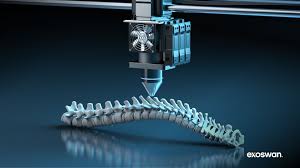
Every year, thousands of people die while waiting for a life-saving organ transplant. The demand for healthy organs far outnumbers the supply, leaving doctors and patients in a desperate struggle against time. But what if we could print new organs on demand—just like we print documents? This is the bold promise of 3D bioprinting, a technology that could completely revolutionize medicine and end the global organ shortage crisis.
1. What Is 3D Bioprinting?
3D bioprinting is a process where living cells are layered, much like ink in a printer, to create tissues and eventually full organs. Instead of using plastics or metals like traditional 3D printers, bioprinters use a special “bio-ink” made of stem cells, growth factors, and hydrogels. This allows scientists to build structures that mimic natural human tissues.
2. The Global Organ Shortage Problem
- Over 100,000 patients are currently waiting for organ transplants in the U.S. alone.
- Many wait years before receiving a match—if they ever do.
- Thousands die each year because suitable donors aren’t found in time.
Bioprinting offers a radical solution: instead of waiting for a donor, doctors could simply print a compatible organ made from the patient’s own cells, eliminating the risk of rejection.
3. Current Achievements in Bioprinting
While we aren’t printing fully functional hearts or kidneys yet, scientists have already made major breakthroughs:
- 3D-printed skin and cartilage are being used in clinical trials.
- Miniature livers and kidneys have been printed for drug testing.
- Vascular networks (tiny blood vessels) can now be printed, a huge step toward printing whole organs.
These achievements prove the technology is moving rapidly from science fiction to medical reality.
4. Challenges Still Ahead
Despite its potential, 3D bioprinting faces hurdles:
- Complexity of Organs: Printing something as intricate as a kidney or heart requires perfect precision in cell placement.
- Longevity & Functionality: Organs must not only be printed but also survive and function inside the human body.
- Cost & Accessibility: Bioprinters and bio-inks are extremely expensive, limiting widespread use for now.
5. How It Could Transform Medicine
If these challenges are solved, 3D bioprinting could:
- End organ waiting lists forever.
- Enable personalized medicine, with organs made from a patient’s own stem cells.
- Allow drug testing on printed tissues, reducing the need for animal testing.
- Create emergency on-demand organs for soldiers, disaster victims, or patients with sudden organ failure.
6. Looking Ahead: A World Without Shortages
Many experts believe that within the next two to three decades, functional printed organs could become a medical norm. Imagine walking into a hospital, and instead of waiting for a donor kidney, you have one bioprinted and transplanted within weeks. This future could redefine healthcare and give millions of people a second chance at life.
Final Thoughts
3D bioprinting isn’t just about technology—it’s about hope. It represents a future where no one dies waiting for an organ and where medicine becomes truly personalized. While challenges remain, the progress so far suggests that one day soon, “out of stock” will no longer apply to human organs.